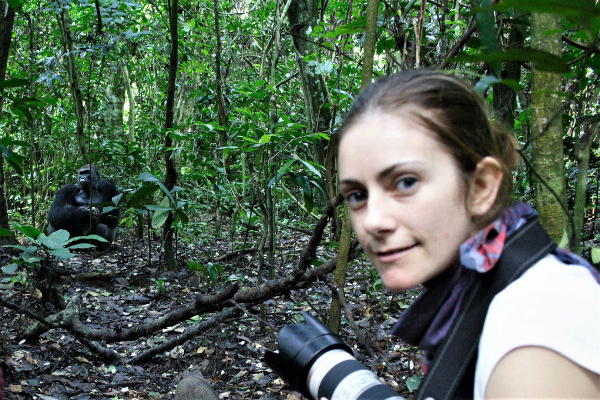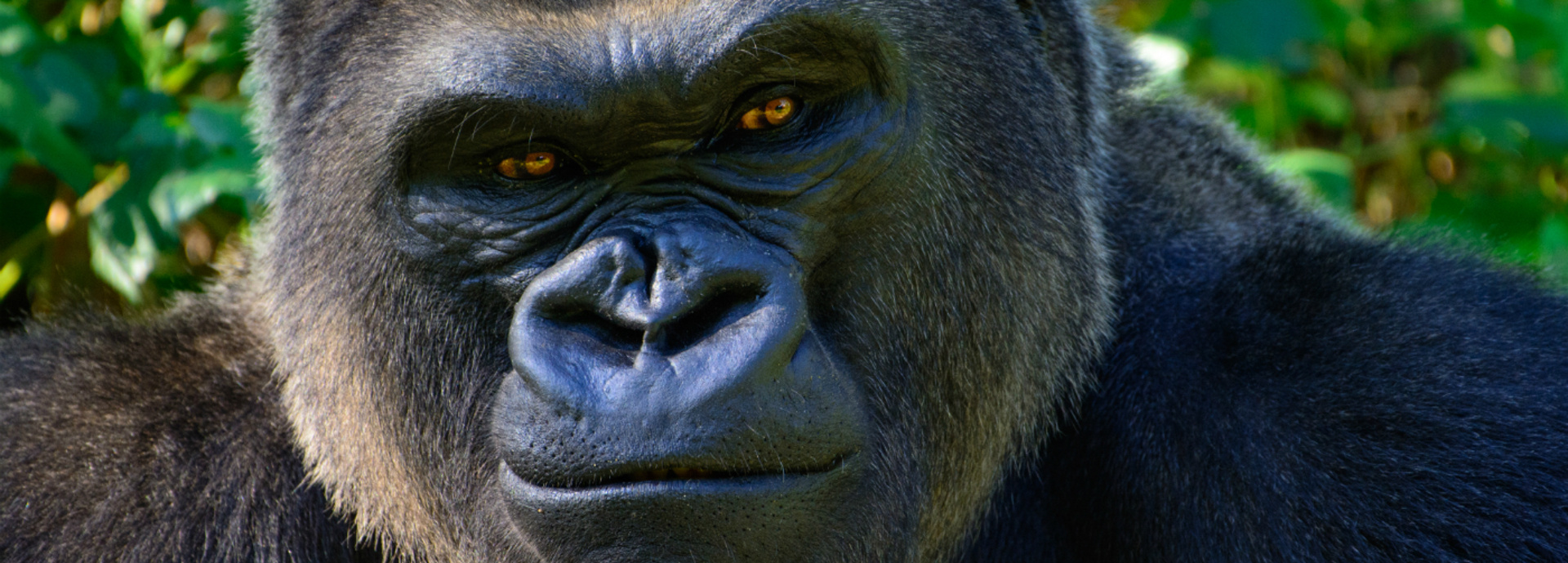A decade-long survey of western lowland gorillas and central chimpanzees has revealed that there are far more apes living in the Western Equatorial region of Africa than previously estimated.
Researchers, including experts from the University of Stirling, estimate that 360,000 gorillas and nearly 130,000 chimpanzees inhabit the forests of the region – more than previously thought.
However, the team also observed that 80 percent of the great apes exist outside protected areas – and that gorilla populations are declining by 2.7 percent annually.
The experts concluded that efforts to stop poaching, illegal logging, and habitat degradation and destruction are key to saving the endangered animals.
Published in Science Advances, the groundbreaking study, led by the Wildlife Conservation Society (WCS), involved 54 co-authors – including Stirling’s Dr Fiona Maisels, Honorary Professor; Dr Liz Williamson, Honorary Senior Research Fellow; and Kathryn Jeffery, Research Fellow.
In the largest study of its kind, the team gathered and analysed data on western lowland gorilla and central chimpanzee populations. The fieldwork – covering 72,000 square miles – collectively took 167 person-years, with researchers walking a distance longer than the north-south axis of Africa.
Experts attributed the disparity between estimated numbers and the actual populations to refinements in survey methodology and new data from areas not previously included in estimates.
Decline
However, during the course of their study, the team also observed a decline in numbers – which supports the continued status of gorillas as ‘critically endangered’ and chimpanzees as ‘endangered’ on the International Union for Conservation of Nature’s (IUCN) Red List of Threatened Species.
The main factors for the decline are illegal hunting, habitat degradation, and disease.

Dr Fiona Maisels, Honorary Professor at Stirling, was involved in the research.
Although the majority of the great apes were found outside protected areas, they were still in large forested landscapes close to or bordering existing national parks and reserves and away from centres of human activity. This suggests that protecting large and intact forested areas, with protected areas at their core, is critical to conserving gorillas and chimpanzees in this region.
Dr Maisels said: “Our study underscores the huge importance of intact forests to gorillas and chimpanzees, and of preventing illegal felling of good quality forests”.
The authors also recommended the implementation of careful logging practices to reduce impacts on wildlife and habitats, and for land-use planning to be considered on a national scale to ensure ecologically-harmful activities is kept away from intact forests and protected areas.

Kathryn Jeffery carried out the research in western Africa.
Dr Williamson, who is also the IUCN Red List Authority Coordinator for great apes, said: “A combination of responsible industrial practices, conservation policies, and a network of well-managed parks and corridors would provide wildlife managers with a winning formula for conserving great apes in Central Africa. Our study has revealed that it is not too late to secure a future for gorillas and chimpanzees.”
Lead author Samantha Strindberg, of the Wildlife Conservation Society, said: “It’s great news that the forests of Western Equatorial Africa still contain hundreds of thousands of gorillas and chimpanzees, but we’re also concerned that so many of these primates are outside protected areas and vulnerable to poachers, disease and habitat loss.
“These findings can help inform national and regional management strategies to safeguard the remaining habitat, increase anti-poaching efforts, and curtail the effects of development on great apes and other wildlife”.
The World Wide Fund for Nature, Max Planck Institute for Evolutionary Anthropology, Jane Goodall Institute, Conservation International and the University of Washington are among the collaborators on the research.
The study, “Guns, germs and trees determine density and distribution of gorillas and chimpanzees in Western Equatorial Africa”, is published in Science Advances.
Background information
Media enquiries to Greg Christison, Communications Officer, on 01786 466 687 or greg.christison@stir.ac.uk

